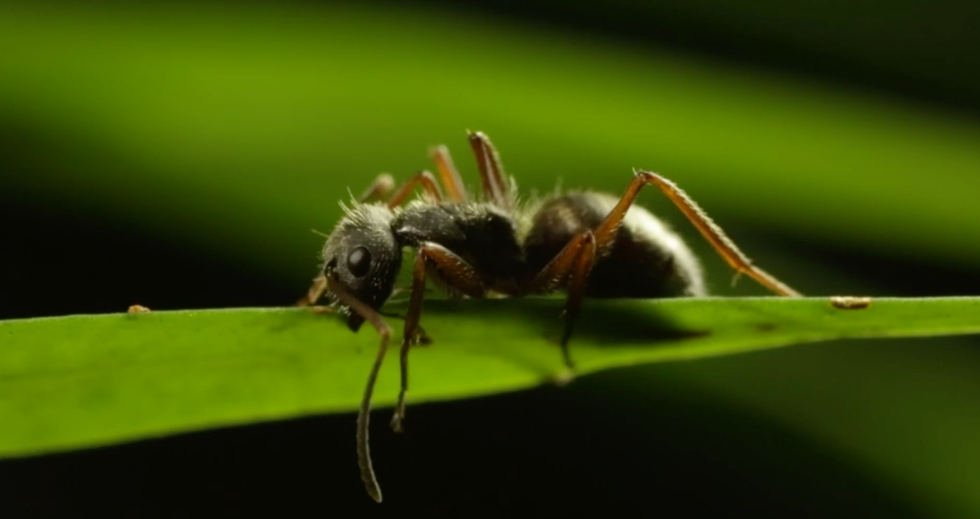
Zombie ants are created from tropical carpenter ants whose bodies are taken over by the Ophiocordyceps unilateralis sensu lato fungas. (Image source: screenshot of National Geographic video)

Thanks to 3-D computer modeling, scientists recently discovered new information about the fungus that causes tropical carpenter ants to turn into zombie ants.
Ophiocordyceps unilateralis sensu lato is a fungus that infects the ant's body and "compels it to crawl over and devour vegetation until it meets its fate clasped to the underside of a leaf or twig, in the tropical forest," according to National Geographic. Once the zombie ant is dead, "toxic spores bloom" from its head and drift to the ground below where it finds new victims to infect. A new study shows the ant's brain is left untouched.
Biologists from Penn State University teamed up with computer scientists from the University of Notre Dame to discover how the zombie ant fungus takes control of its victims.
Previously, researchers believed that the fungus sent its marching orders to the ant by making its way into the ant's brain.
"You'd think that to control an animal, you might need to control the brain," the study's first author, Maridel Fredericksen, currently a doctoral candidate at the University of Basel Zoological Institute in Switzerland, said. "It's not present in the brain. It seems like it's controlling it from the outside somehow."
The team developed 3-D images of the scenario to figure out how the fungal cells interact inside the ant's body.
Then, using artificial intelligence computers, the researchers looked at the images to determine the differences between the fungus and the ant.
They discovered that the fungus acts like a puppeteer, "tweaking its muscles but leaving the brain intact," David Hughes told Tech Times. Hughes is an associate professor of entomology and biology at Penn State and co-author of the study.
The fungus manages to occupy the ant's entire body without infecting the brain.
Hughes said it's possible that the parasite preserves the brain so it can "drive the host to an area where it can infect other ants at the end of its life." The ants die in a very specific area, he added.
The parasite can't get directly inside ant colonies because the microclimate doesn’t foster its growth.
Once the ant is dead, the fungus grows a stalk, called the stroma, which protrudes from the ant's dead body. A large round structure, known as the ascoma, forms on the stroma, according to Penn State News.
Next, infectious spores develop in the ascoma. The spores drop onto the forest floor below, where foraging ants can become infected.
This fungal reproductive activity must take place outside the ant colony, in part because of the ants' social immunity, which is collective action taken to limit disease spread, Hughes told Penn State News.
Humans and fungi have more in common genetically than plants and fungi.
So things that kill people are more likely to kill fungi than plants, which means this research could be helpful in the future to investigate other fungal diseases and defenses, Hughes explained to National Geographic.
In terms of artificial intelligence research, “this is quite a new technique that people might be excited about,” Charissa de Bekker, a professor at the University of Central Florida told National Geographic.